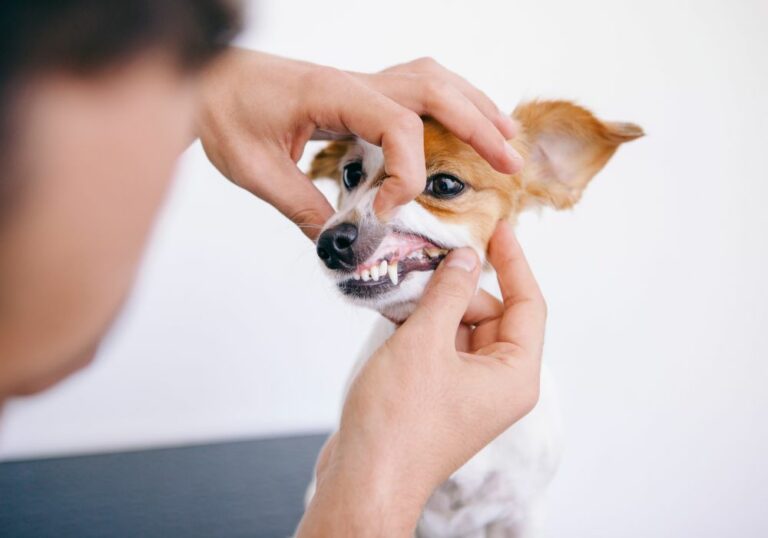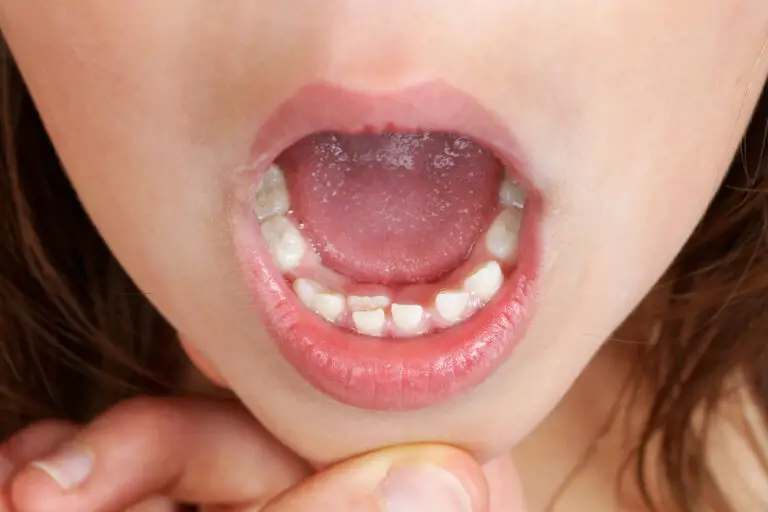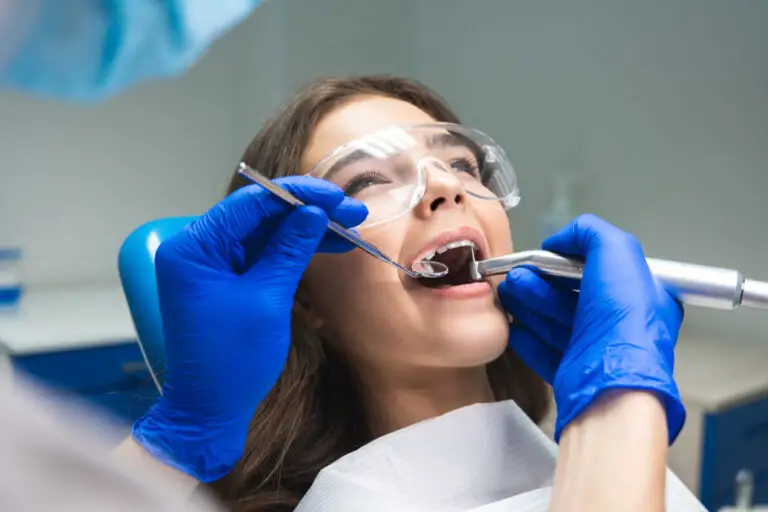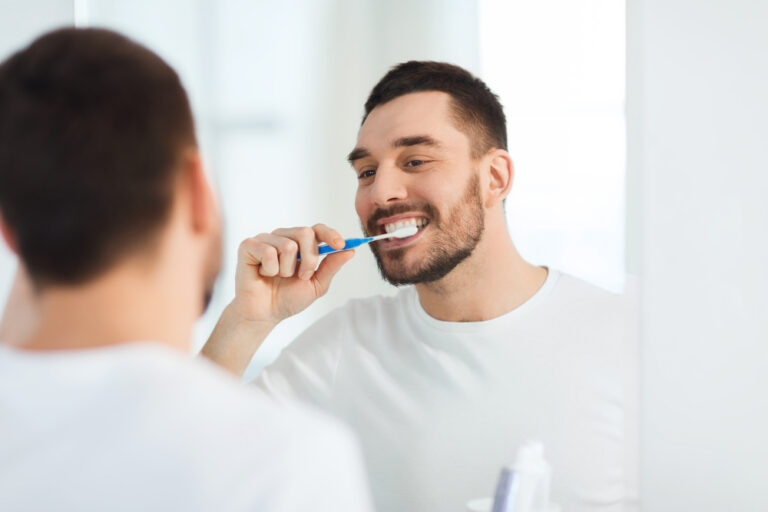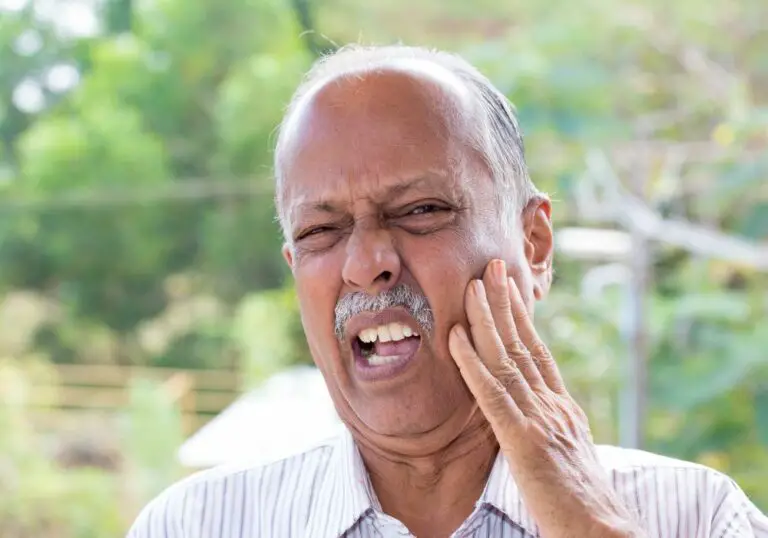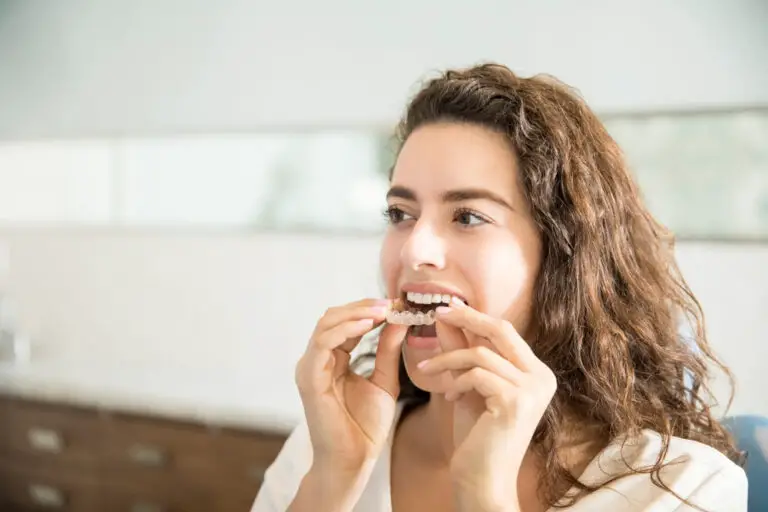Dogs tend to show their teeth during play for a variety of reasons. This behavior may seem aggressive to humans, but it’s usually quite normal and harmless for dogs. Understanding the context behind a dog’s tooth-baring can help owners discern if their pup is being playful or truly aggressive.
Common reasons dogs bare teeth while playing
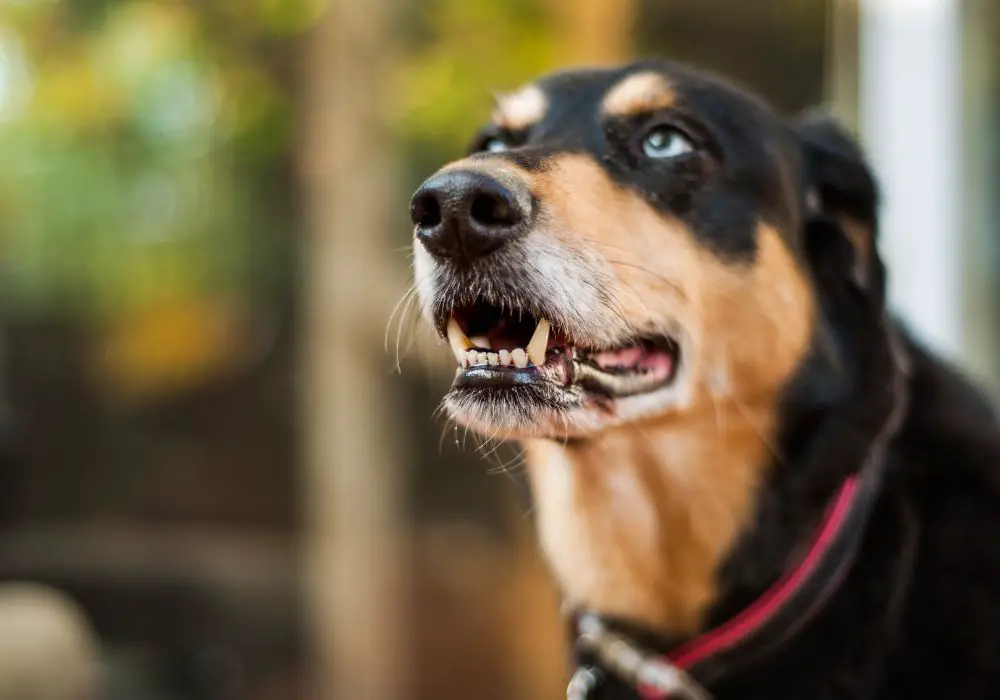
Mimicking wild behavior
Dogs are descended from wolves, who used their teeth as tools for hunting, defense, and communication. Domestic dogs retain many of these instincts, even though they’re fully domesticated companion animals.
Showing teeth during play likely stems from a dog’s innate prey drive and desire to act out hunting behaviors. Exposing teeth may serve as practice for using their jaws against prey. It also helps dogs hone their physical coordination and skills.
Communicating playful intent
For dogs, baring teeth doesn’t always equate to aggression. It can signify many different emotional states, depending on the context. Dogs will often expose their teeth during play as a way to communicate a playful mood and intent.
Exposing teeth seems to act as a visual signal that says, “I’m just playing here!” For dogs, it’s part of their playful body language and communication style.
Mimicking a “kill bite”
Related to prey drive, some dogs will play-bite at their owners or other dogs and bare their teeth while doing so. This mimics the “kill bite” dogs would perform on real prey to dispatch it. It allows them to act out hunting sequences.
Of course, dogs know not to actually bite down hard on human skin. So even though those exposed teeth look fierce, the dog is just pretending to capture and kill its play “prey.”
Being gentle
Ironically, some dogs show their teeth in play as a way to avoid causing harm. By exposing teeth instead of actual biting or mouthing, dogs can put on a big visual display while still being gentle with their mouths.
It’s almost like the dog is saying, “See how ferocious I could be…but don’t worry, I won’t actually bite!” This helps dogs blow off steam without hurting anyone.
Individual temperament
Some dogs are simply more mouthy during play than others due to their unique personalities. More dominant, active, or prey-driven dogs are often quite bitey and jumpy when playing. They get carried away in the excitement and intensity of play-fighting or chasing games.
For these dogs, tooth-baring is just a natural extension of their exuberant play style. With training, you can teach them to tone down the teeth and jumping while still enjoying play.
Is my dog being aggressive or playing?
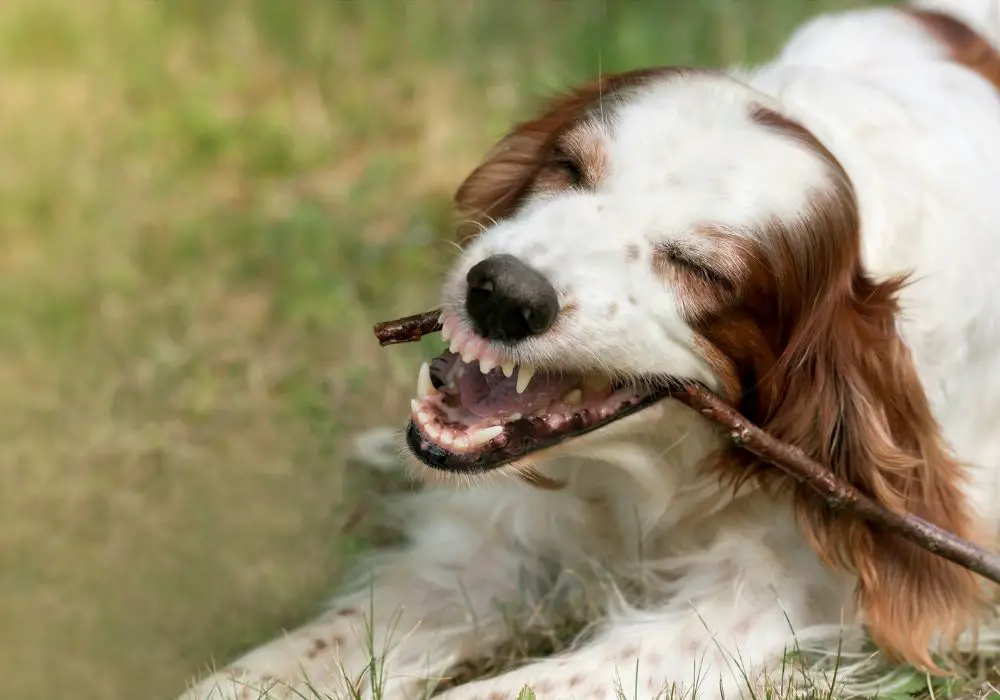
While dogs bare their teeth routinely during play, sometimes this behavior does signal true aggression or a warning. To identify the difference, look at the context of the situation and your dog’s body language for clues.
Playful tooth-baring often involves:
- Play bows and exaggerated movements
- Loose/wiggly body posture
- Tail wagging or relaxed tail
- Ears back/flattened but not pinned to head
- No actual biting down
- Invitation to play or taking turns chasing/wrestling
Aggressive or threatening tooth-baring often involves:
- Ears pinned back and tail held high or stiff
- Tense, rigid, or looming body posture
- Low growls or warning barks
- Teeth snapping without play contact
- Furrowed brow or “whale eye” where whites of eyes show
- Lunging forward or chasing to bite for real
- Biting down with force, not just mouthing
- No interest in playing or taking turns
Other contextual factors
Also consider what triggered the tooth-baring and if it’s directed at a person or animal. Some examples of aggressive displays include:
- Resource guarding (food, toys, sleeping area)
- Fear/defensiveness over handling, grooming, veterinary exams
- Territory guarding against visitors or passersby
- Predatory aggression towards smaller animals like cats
If the tooth-baring centers around guarding resources, seems fear-based, or is directed at specific targets, it likely signifies aggression versus play.
Is tooth-baring during play problematic?
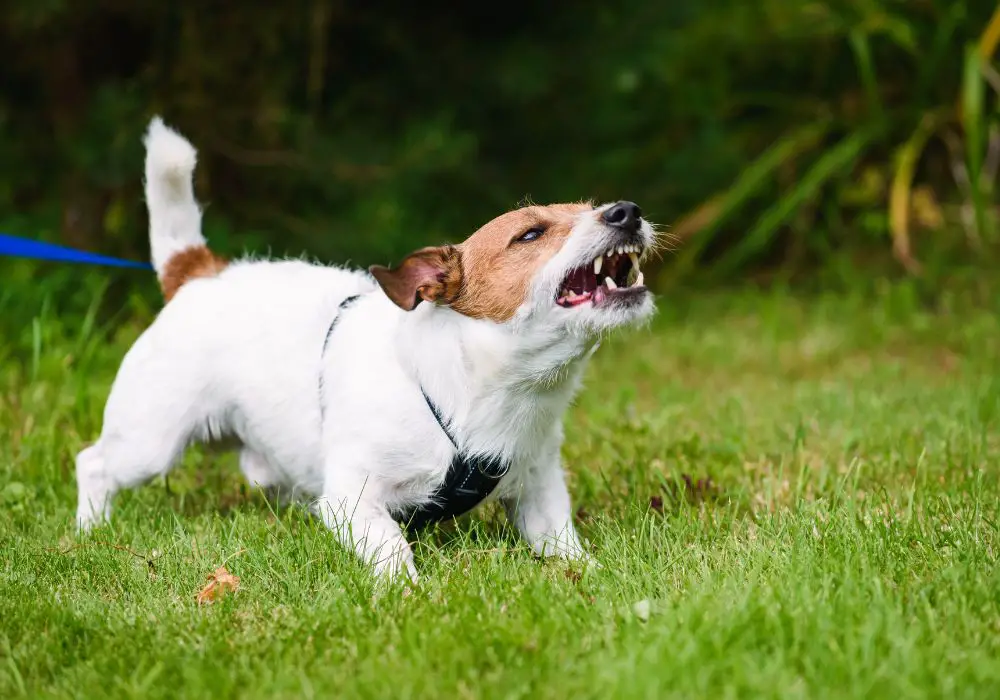
Most pup parents don’t mind when their dogs flash some tooth while playing. It’s viewed as perfectly normal dog behavior. However, there are some potential drawbacks to look out for.
Risk of accidental bites
Vigorous play paired with exposed teeth does create a higher risk of accidental bites. Teeth may graze or nip skin while a dog is riled up. This usually doesn’t cause serious injury, but it’s possible bites could break skin.
You’ll want to discourage mouthing and any pressure on human skin. And carefully manage play between dogs where one is much larger than the other. Supervision ensures overly rambunctious chomping doesn’t lead to harm.
Can seem aggressive to strangers
Not everyone understands that a dog showing its pearly whites mid-play is still being friendly. The uninitiated may misinterpret teeth-baring as the dog being threatening or dangerous.
This is especially problematic with unfamiliar children who try to pet or interact with the dog during active play. Always exercise caution allowing dogs that flash their teeth to play or be pet by strangers.
Potential to trigger real aggression
Physically rough, enthusiastic play has some potential to cross over into actual aggression or fighting. In the heat of the moment, a dog might get overly excited or defensive and move from pretend “killing” to real biting.
That’s why it’s essential to continually monitor dogs at play, redirect over-arousal, and step in at the first sign of any bullying or aggressive behaviors emerging. Teach dogs to play nicely together and with restraint.
Fostering bad habits
While it’s normal, allowing dogs to be mouthy or exposed teeth too much during play can reinforce bad habits. Dogs should learn to moderate their own play style. Perpetual roughhousing can prevent dogs from developing this self-control.
Make sure playtime teeth antics don’t become an ingrained way your dog interacts with you or other pets. Maintain boundaries and rules around mouthing to inhibit it from becoming a problem behavior outside of play.
Training dogs to play nice
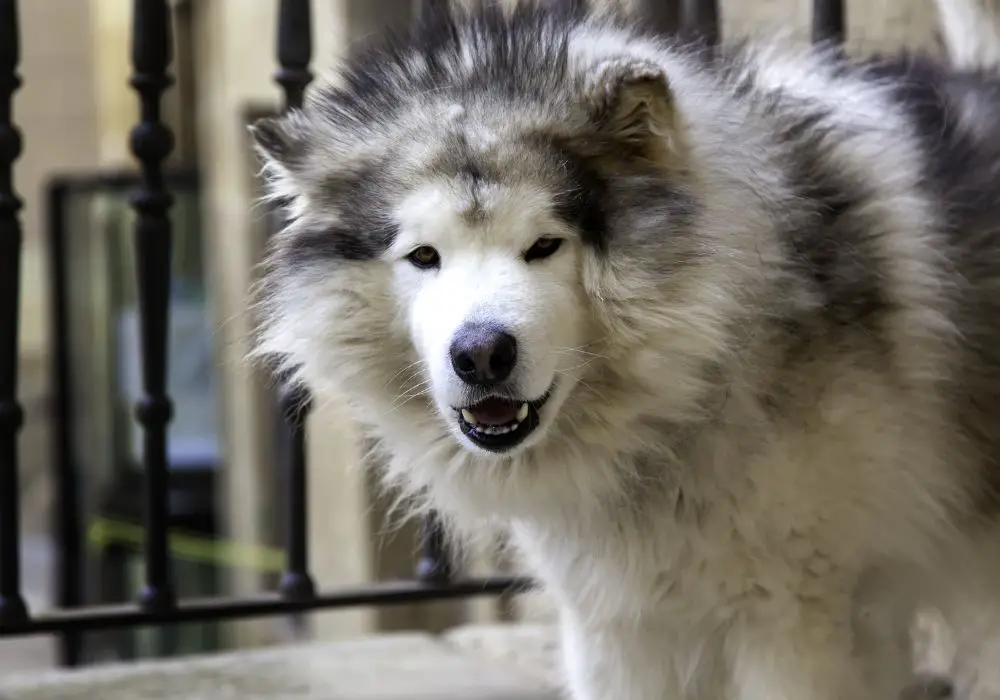
You can curtail excessive tooth flashing during play with some simple training techniques and rules. Always use positive reinforcement, not punishment.
Redirect with toys
If your dog starts to mouth or nip people, instantly redirect to a toy. Use treats to reward them for taking out mouthy energy on toys instead. Offer praise for good toy play.
Learn bite inhibition
Train your dog to play bite gently by yipping loudly when their teeth make contact. Ignore them briefly after yipping to teach that mouthing ends the fun. Reward gentle play without pressure.
Teach impulse control
Use “leave it” and “drop it” cues during play. Ask for a sit or down to insert short impulse control breaks. Go back to play when they obey calmly.
Set rules
Only allow interactive toy play, not teeth on human skin. Stop play if it gets too rough or teeth come out. Calm things down with training cues or gentle pets. Show that play stops if they can’t play by the rules.
Exercise beforehand
Make sure your dog gets plenty of exercise before play sessions. Tired dogs tend to play more gently and with less nippy mouthiness.
Supervise interactions
Always monitor your dog closely when playing with kids or other pets. Intervene at the very first sign of overly intense nipping or guarding behavior.
Consider professional help
For dogs who struggle with bite inhibition or controlling mouthiness, consult a certified trainer or behaviorist. They can assess your dog’s behavior and offer customized training plans. Medical issues can also contribute to aggressive behavior, so discuss concerns with your veterinarian.
The takeaway on playful tooth-baring
Flashing pearly whites now and then during spirited play is perfectly normal, harmless dog behavior. But context is key – take aggressive-looking body language and actions seriously. With training and supervision, you can ensure your pup knows how to play nice, even when those teeth come out. Keeping play safe, friendly, and controlled allows dogs to enjoy it without repercussions. With some simple tweaks, the dog and human can play on!
FQA
Q: Is my dog playing or being aggressive when he shows his teeth?
A: Look at your dog’s whole body language, not just the teeth. Playful tooth-baring is often accompanied by a play bow, loose wiggly body, relaxed tail wags, flattened ears but not pinned back tightly, and no real biting down. Aggressive displays involve tense posture, pinned back ears, growling, attempts to bite for real, and lack of interest in playing or taking turns.
Q: Should I be worried if my puppy nips a lot when playing?
A: It’s very common for puppies to be quite mouthy in play while learning bite inhibition. Continue training with positive techniques like redirection and rewarding gentleness. Praise puppy when teeth don’t make contact. If the mouthing remains very hard and frequent past teething stage, seek professional training help.
Q: Why does my dog show so much teeth when playing with certain dogs?
A: Some dogs just seem to bring out more teeth flashing and roughhousing from other dogs due to arousal and play style differences. Carefully monitor all play dates and have dogs take breaks if it gets overstimulating. Ensure your dog still follows rules about not mouthing human skin even when very revved up.
Q: How can I stop my dog from nipping at my hands and feet during play?
A: The most effective method is to immediately end play anytime teeth touch human skin. Give a cue like “enough” and walk away or turn your back briefly. Once the dog is calm, redirect to a toy and reward with praise and play. Be consistent and your dog will learn that teeth on skin always ends the fun.
Q: Is my older dog starting to get aggressive if he snarls and shows his teeth more?
A: Increased tooth-baring and irritability can happen with some older dogs due to pain, cognitive issues, or stress. First, schedule a veterinary exam to rule out underlying medical causes like arthritis or dementia. Also evaluate what situations tend to trigger the behavior and make any needed lifestyle adjustments to accommodate your senior dog’s needs. Positive training can help an older dog feel more secure.

